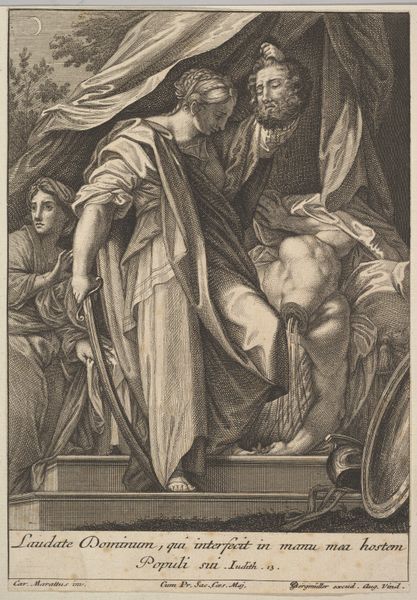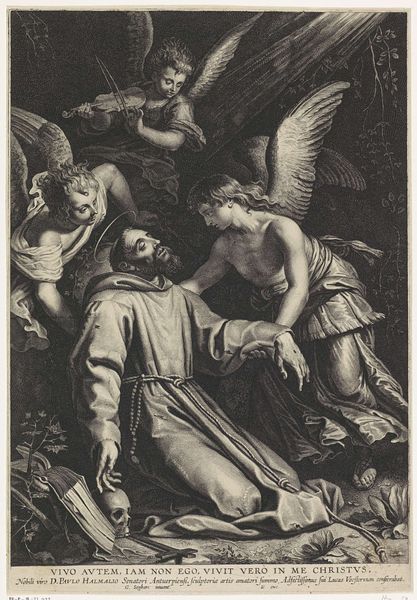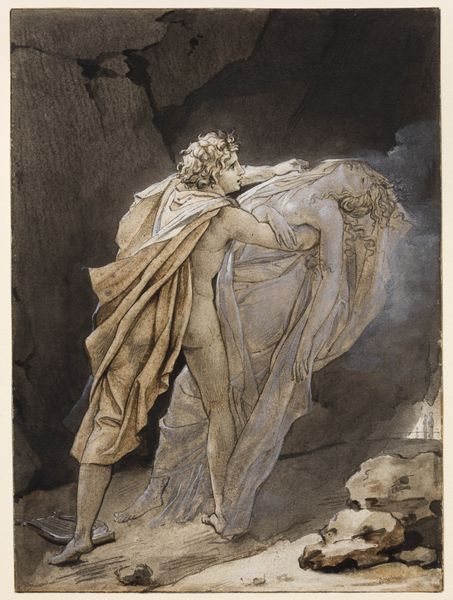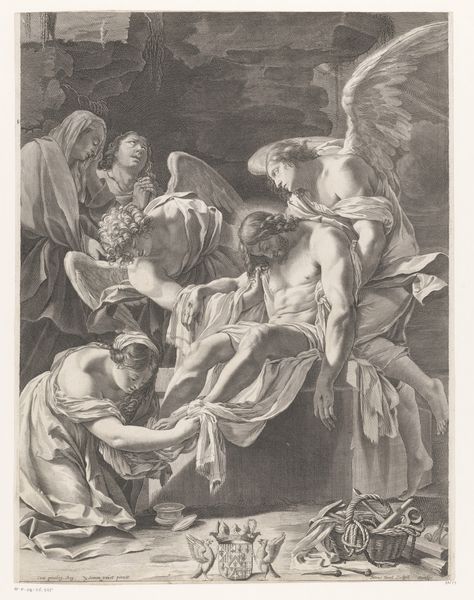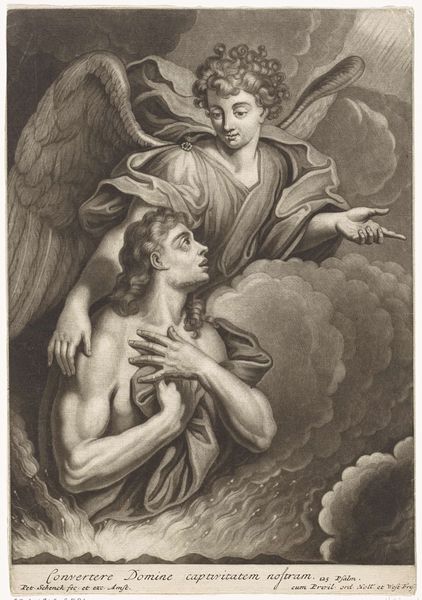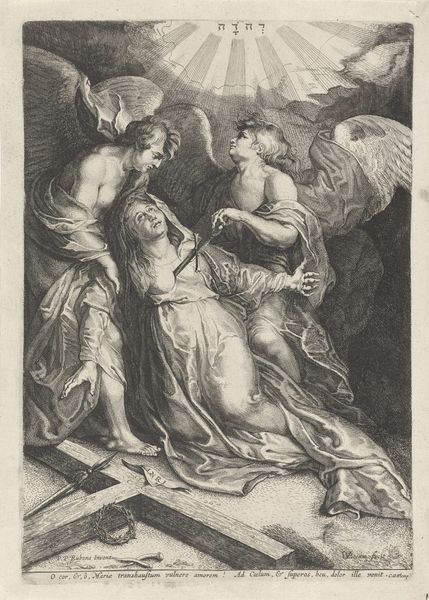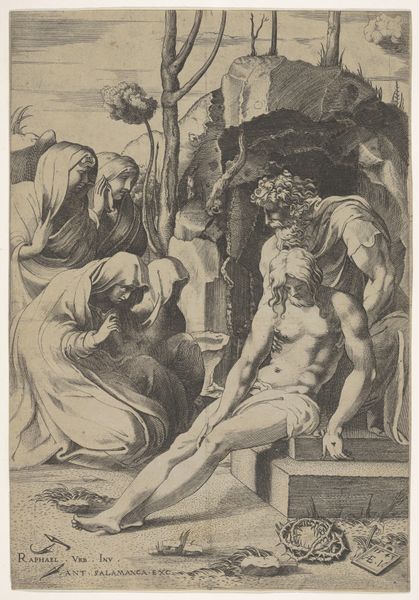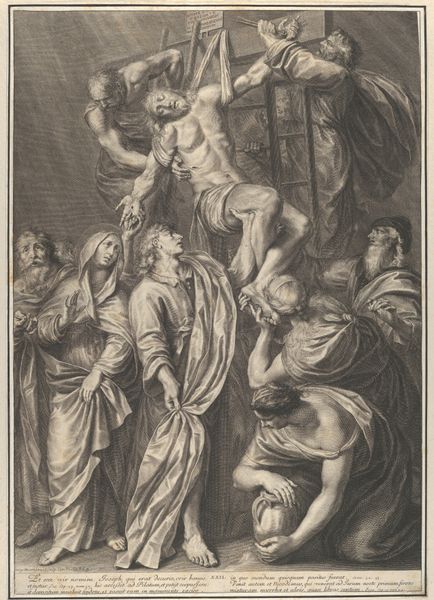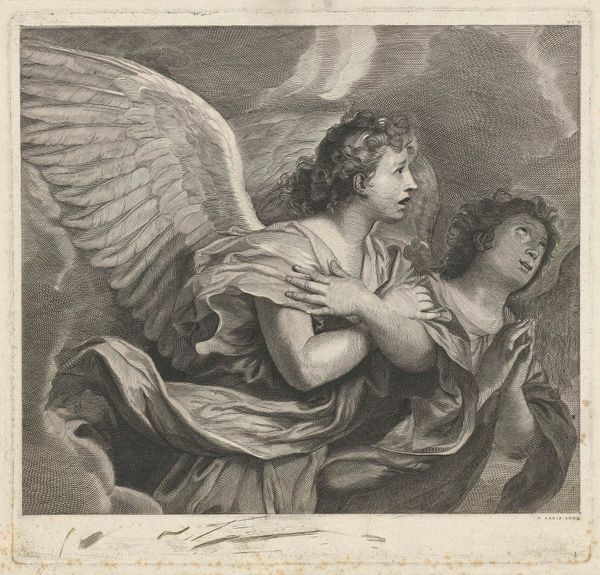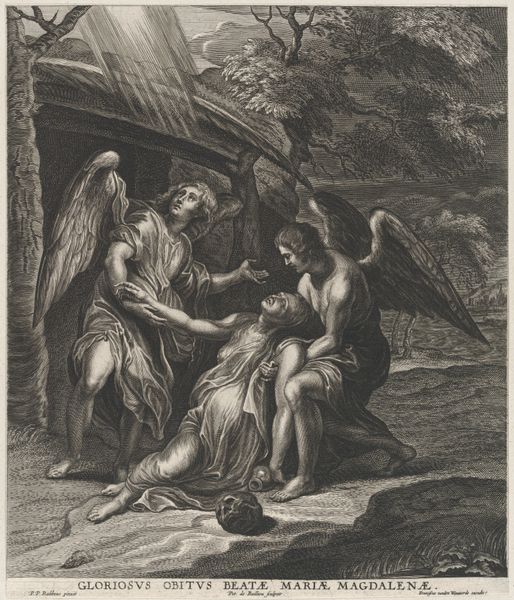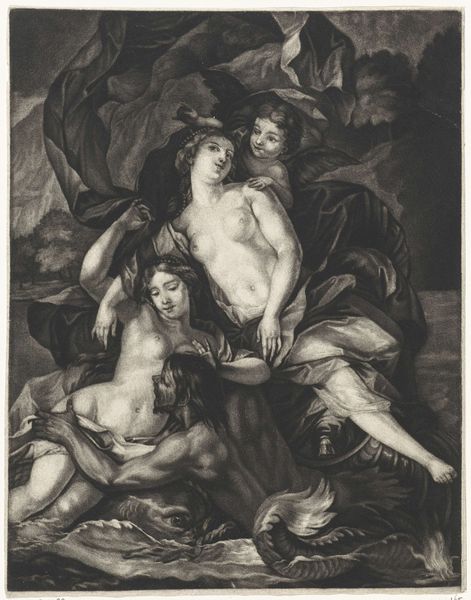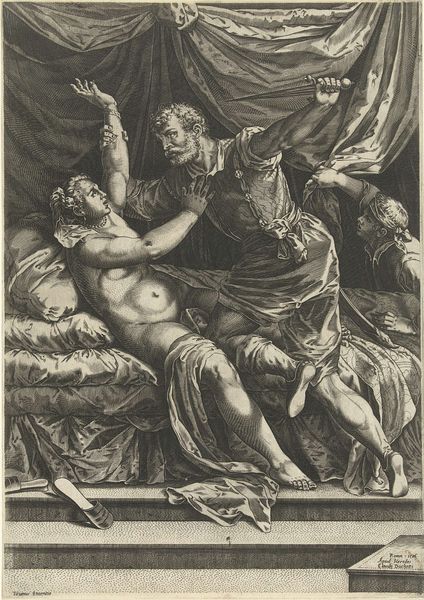
drawing, print, engraving
#
drawing
#
baroque
# print
#
figuration
#
history-painting
#
engraving
Dimensions: Sheet: 15 9/16 × 13 3/16 in. (39.5 × 33.5 cm)
Copyright: Public Domain
Curator: This engraving, known as "Christ on the Mount of Olives," was created between 1669 and 1712, after Michael Angelo Caravaggio. The print exemplifies Baroque art. Editor: It strikes me as incredibly somber. The heavy use of shadow emphasizes the weight of despair and creates a tense atmosphere. It feels very close. Curator: It is a figuration of great historical and cultural significance. Consider the context; it captures Christ's agony in the Garden of Gethsemane, wrestling with his fate. The angel offering solace encapsulates divine intervention, a prominent theme during the Baroque period. Think of the performativity inherent in representing spiritual experiences at this moment in Europe. Editor: The materials, too, lend to the interpretation. The precision of the engraving process itself underscores the social function of this type of artwork. Each etched line served to multiply access to this important depiction, thus democratizing religious narratives for broader consumption. Consider also how prints as transportable objects influenced knowledge sharing beyond geographic borders. Curator: And consider the identities entangled within. It highlights the duality of Christ as both divine and human, suffering in his humanity while sustained by his divinity. These portrayals have historically impacted societal understandings of power, suffering, and salvation, as well as who had the authority to interpret that salvation. Editor: Absolutely, this artwork also shows the social value placed on religious interpretation and mass access. It suggests to me the importance of understanding the means by which the reproduction and spread of such iconic imagery were carried out. Curator: This is a crucial point, yes, allowing us to re-evaluate whose story is amplified and what power dynamics are embedded within seemingly innocuous reproductions. Editor: Ultimately, both form and content in "Christ on the Mount of Olives" showcase the means of making this iconic biblical image accessible during a complex and transformative period. Curator: Precisely; it challenges us to grapple with both historical contexts and the reproduction's legacy, thereby provoking crucial dialogue around representation.
Comments
No comments
Be the first to comment and join the conversation on the ultimate creative platform.
